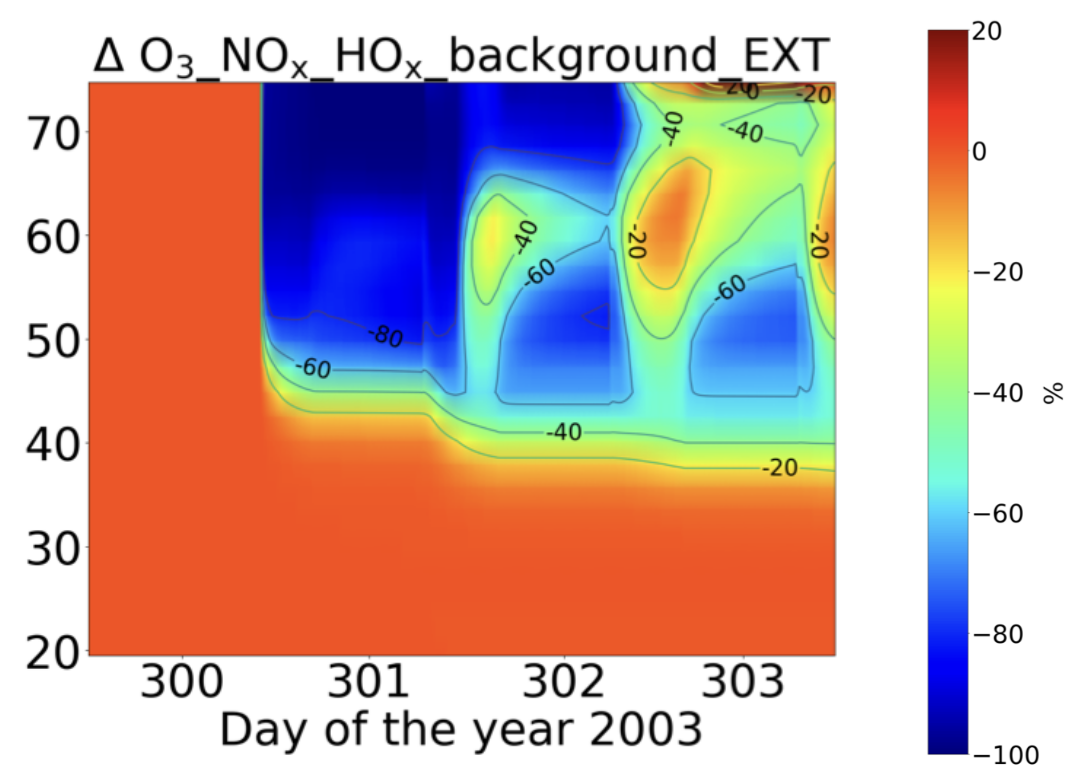Worst case scenario for a solar proton event predicts largest possible ozone losses

The figure shows the modelled ozone loss during and after an extreme solar proton event (SPE) similar to the one that occurred in 775 A.D. which can be considered as a worst case scenario. Averages over the Northern polar cap are shown over time and altitude (in km). The total mesospheric ozone loss at the onset of the event due to HOx chemistry is followed by ozone losses in the stratosphere due to longer lived NOx. The settings of the model run were selected according to best agreement with MIPAS observations for the Halloween SPE in 2003. Details can be found here.
High energetic particles from the Sun, generated by coronal mass ejections, can precipitate into the Earth's atmosphere, mainly at the magnetic poles, and trigger chemical processes. Since these affect, among others, stratospheric ozone, and resulting ozone depletion leads to increased exposure to UV radiation, it is important to understand the related processes. Borthakur et al. (https://doi.org/10.5194/acp-23-12985-2023) have analysed chemical processes involving chlorine chemistry by comparison of a state of the art 1D stacked-box model called Exoplanetary Terrestrial Ion Chemistry (ExoTIC), including atmospheric ion and neutral composition to MIPAS satellite data in the Northern Hemisphere. The best model settings in terms of their agreement with MIPAS observations were then used to simulate an extreme solar event in 775 A.D., presumably a once-in-a-1000-year event. With the model applied to this scenario, assessment can be made what is to be expected at worst for effects of a SPE on the middle atmosphere. They found that such a worst-case scenario event is able to perturb the polar stratosphere and mesosphere, with a high production of NOy and odd oxides of hydrogen (HOx). Longer lasting and stronger stratospheric ozone loss was also seen for the extreme event, due to a longer lasting impact on HOCl and hydrochloric acid (HCl). On the very day of the extreme event, a 20% ozone loss due to chlorine chemistry alone was found.
